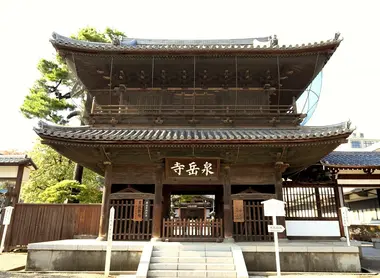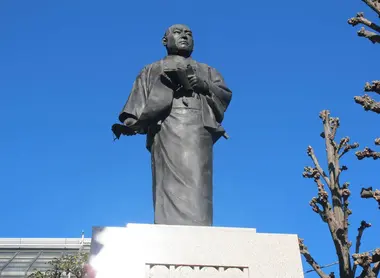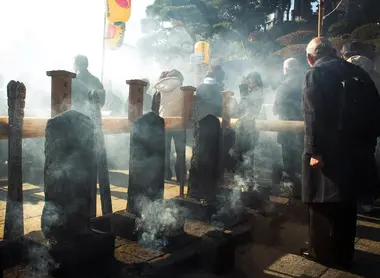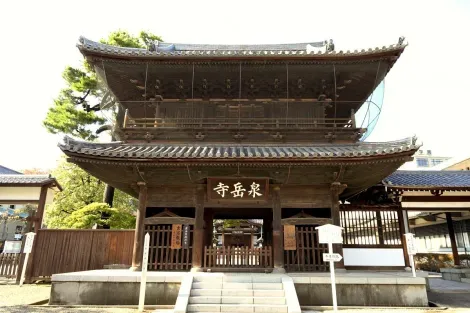Sengakuji temple and its 47 samurais
- Published on : 27/05/2024
- by : R.Z. / J.R.
- Youtube
In the heart of Tokyo stands a temple steeped in history: the Sengakuji. This sacred site is home to the tombs of the legendary 47 rōnin, symbols of loyalty and honor in Japanese culture. Built in 1612 by the shogun Tokugawa Ieyasu, the Sengakuji temple became the scene of one of the most famous episodes in samurai history. Located in the Takanawa district, this Zen shrine attracts large numbers of visitors every year to pay homage to these legendary warriors. Discover the fascinating history of the 47 rōnin and explore this unique place of remembrance that perpetuates their legacy.
Sengakuji temple history and cultural significance
Sengakuji temple, founded in 1612 by Shogun Ieyasu Tokugawa, is a Buddhist shrine of the Sōtō Zen school. Originally built near Edo Castle, it was moved to its present location after a fire during the Kan'ei era. Over the centuries, Sengakuji became an important center of study for Zen monks.
However, it was an event in the early 18th century that would forever mark the temple's history. In 1701, lord Asano Naganori was forced to commit ritual suicide (seppuku) after wounding master of ceremonies Kira Yoshinaka inside the shogunal palace. This incident gave rise to the legendary story of the 47 rōnin, the masterless samurai who avenged their lord's death.
Today, Sengakuji temple is an important place of remembrance in Japanese culture. It embodies the values of loyalty and honor enshrined in bushido, the samurai code. Every year, thousands of visitors come to pay their respects at the graves of the 47 rōnin, perpetuating their memory and the importance of their deeds in the Japanese collective imagination.
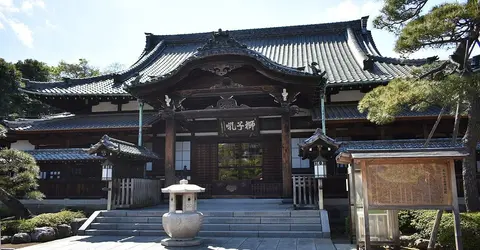
Sengaku-ji
Wikimedia Commons
The historical event of the 47 rōnin: context and unfolding
The story of the 47 rōnin begins in 1701, during the Edo period. Lord Asano Naganori, daimyo of the Akō estate, injures master of ceremonies Kira Yoshinaka in the grounds of the shogun' s palace . For this act, Asano is condemned to seppuku, leaving his samurai without a master, thus becoming rōnin.
Refusing to accept this injustice, 47 of Asano's former samurai, led by Ōishi Kuranosuke, vow to avenge their lord despite the formal ban on vengeance. For nearly two years, they meticulously prepare their plan, going so far as to pose as drunkards and debauchees to deceive Kira's vigilance.
On December 14, 1702, the 47 rōnin took action. They attacked Kira's residence, killed him and brought his head to their master's tomb at Sengakuji temple. Having taken their revenge, they surrendered to the authorities, accepting the consequences of their actions. The shogun, recognizing their loyalty, grants them an honorable death by seppuku rather than execution as criminals.
Sengakuji Temple today: a place of remembrance and pilgrimage
Today, Sengakuji temple is much more than just a place of Buddhist worship. It has become a veritable shrine dedicated to the memory of the 47 rōnin, attracting thousands of Japanese and foreign visitors every year. The tombs of the 47 rōnin, as well as that of their lord Asano Naganori, are the object of numerous visits and incense offerings.
The temple also houses a small museum dedicated to the history of the 47 rōnin. On display are personal objects that once belonged to the samurai, as well as documents recounting their history. Although the explanations are mainly in Japanese, the atmosphere of the place is enough to imbue visitors with the historical and cultural importance of this episode.
Every year, on December 14, the temple organizes the Akō Gishi Sai festival in honor of the 47 rōnin. This event attracts numerous devotees and onlookers who come to witness the commemorative ceremony and the parade of people dressed as samurai. It's also an opportunity to sample culinary specialties such as okonomiyaki.
Architecture and points of interest at Sengakuji Temple
Although Sengakuji temple is modest in size compared to other Tokyo shrines, its architecture and points of interest are well worth a visit. The main gate (sanmon) is one of the temple's few original features, having survived successive fires and reconstructions.
The temple cemetery, where the 47 rōnin and their lord are laid to rest, is the focal point of the visit. The tombs, identified by the name and age of each samurai, are arranged around that of Asano Naganori. An imposing statue of the rōnin leader, Ōishi Kuranosuke, watches over the ensemble.
Another remarkable feature is the Kubi-arai ido well, where the rōnin are said to have washed Kira's head before presenting it at their master's tomb. This well, still visible today, is a concrete testimony to this legendary story. The main temple building, rebuilt in concrete after the Second World War, houses a Buddha statue and sacred objects.
The annual Ako Gishi Sai festival and other celebrations
The highlight of celebrations at Sengakuji temple is undoubtedly the Akō Gishi Sai festival, held every year on December 14. This date commemorates the day when the 47 rōnin carried out their revenge. The festival attracts thousands of visitors and offers a unique immersion in Japanese history and culture.
Festival highlights include:
- A solemn commemorative ceremony attended by Buddhist priests
- A parade of 47 people dressed as samurai, representing the historical rōnin
- Demonstrations of traditional martial arts
- The opportunity for visitors to burn incense on the tombs of the 47 rōnin
In addition to this major festival, the temple regularly organizes events linked to samurai culture and the history of the 47 rōnin. These celebrations help to keep alive the memory of these legendary warriors and pass on the values they embodied to new generations.
Practical information for visiting Sengakuji temple
For those wishing to discover this place steeped in history, here is some practical information to help you plan your visit to Sengakuji temple:
- Address: 2 Chome-11-1 Takanawa, Minato City, Tokyo 108-0074, Japan
- Telephone: +81(0)33 441 5560
- Opening hours: The temple is open daily from 7 a.m. to 5 p.m. (until 6 p.m. from April to September). The museum is open from 9am to 4:30pm (4pm from October to March)
- Admission: Entrance to the temple is free. The museum is accessible for 500 yen
- Access: The nearest station is Sengakuji on the Toei Asakusa subway line (exit A2). The temple can also be reached on foot from Shinagawa or Tamachi stations on the JR Yamanote line (15-20 minute walk)
To get the most out of your visit, allow around 1-2 hours on site. A PASMO or SUICA card makes it easy to get around Tokyo.
Sengakuji temple in Japanese and international popular culture
The story of the 47 rōnin, intimately linked to Sengakuji temple, has had a profound impact on Japanese culture, even extending beyond the archipelago's borders. This epic has inspired many artistic and cultural works over the centuries, helping to make Sengakuji an emblematic place.
In Japan, the story of the 47 rōnin, known as "Chūshingura", has been adapted in almost every medium:
- In kabuki and bunraku theater, with the famous play "Kanadehon Chūshingura"
- In literature, with numerous novels and stories
- In film and television, with dozens of adaptations
- In manga and anime
Internationally, the story has also aroused interest, as witnessed by the Hollywood film "47 Ronin" (2013) starring Keanu Reeves. Sengakuji temple has thus become a place of pilgrimage not only for the Japanese, but also for lovers of samurai history and culture from all over the world.
For visitors wishing to delve deeper into the world of samurai, the Samurai Museum in Shinjuku offers an interesting complementary experience. And for those seeking total immersion in this fascinating era, the In the Footsteps of the Samurai activity in Matsumoto promises a unique experience.
The Sengakuji temple remains a living witness to Japanese history, where past and present meet, perpetuating the memory of the 47 rōnin and the values they embodied. A visit to this site steeped in history is a must for anyone interested in samurai culture and Japanese history. Discover our tours to include this fascinating stop on your trip to Japan.
Follow in the footsteps of the samurai in this immersive activity!
Address, timetable & access
Address
Phone
+81(0)33 441 5560Timetable
sengakuji station on the Toei Asakusa subway line (exit A2). 15 or 20 min walk from Shinagawa or Tamachi stations on the JRYamanote linePrice
free for the temple, 500 yen for the museumAccess
open daily from 7 a.m. to 5 p.m. for the temple and from 9 a.m. to 4:30 p.m. for the museum
